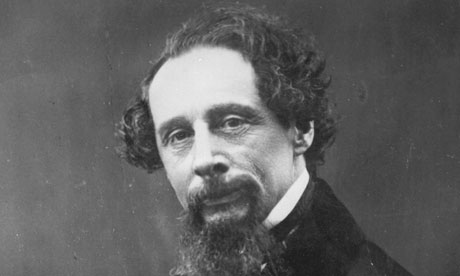The spirits which terrorise and ultimately reform Scrooge in A Christmas Carol may have been due to a nightmare brought on, as the miser put it, by "an undigested bit of beef, a blot of mustard, a crumb of cheese".
Now a new exhibition at the British Library marking the bicentenary in 2012 of Charles Dickens's birth suggests that the real-life mystery of another ghost story by the author may have had an equally prosaic beginning: a manuscript he allegedly stole from a rival.
Dickens wrote some of the best-loved spooky yarns in the English language – but he did not please one artist who accused him of plagiarising his apparition in a piece published in 1861.
The author and artist Thomas Heaphy bitterly accused Dickens of underhand dealing and blatantly ripping off his own story which he had sent to the printers.
Friend and biographer John Forster described Dickens as having "a hankering after ghosts".
But Andrea Lloyd, curator of the British Library exhibition, says the author was always careful to include a possible rational explanation in his ghostly writings.
He was fascinated by the occult, a genius at evoking eerie atmosphere and powerful, malign characters, and knew there was nothing like a spinechiller to boost circulation for magazines which published his novels in instalments.
In 1861 Dickens published a piece in his own All the Year Round magazine called Four Ghost Stories. One of the stories featured a beautiful young woman asking a portrait painter if he could remember her face well enough to paint it from memory months later.
The artist replied in puzzlement that he possibly could, but would much prefer conventional sittings.
"Impossible," she replied. "It could not be."
It transpires that she is already dead, and the portrait is needed to console her grieving father.
The story is hardly Dickens's finest effort, but it certainly caused a reaction in Heaphy, a now almost entirely forgotten Victorian artist. (Tate and the National Portrait Gallery both have works by his father in the collections, but nothing by him).
Heaphy wrote to Dickens in a rage, claiming that not only had he written up an identical story, ready for publication in the Christmas issue of a rival magazine, but that it had really happened to him – and on 13 September too, the very date Dickens had added in pencil in the margin of his own version.
There was never any explanation of the mystery: Dickens insisted that he was completely innocent of plagiarism, deliberate or psychic.
He called the episode, Forster wrote, "So very original, so very extraordinary, so very far beyond the version I have published that all other stories turn pale before it.
"Everything connected with it is amazing; but conceive this – the portrait painter had been engaged to write it elsewhere as a story for next Christmas and not unnaturally supposed when he saw himself anticipated in All the Year Round that there had been treachery at his printers."
The exhibition includes a very rare publication, a small booklet entitled A Wonderful Ghost Story Being Mr H's Own Narrative, which the artist published years later, giving his own version of the story.
Despite including in very large type "with unpublished Letters from Charles Dickens", it was not a success.
Although Dickens conducted a running battle with spiritualists over exposés in his magazines of fake mediums and seances, he did however believe in the so-called new science of mesmerism.
He was convinced he himself could heal others by putting them into a hypnotic trance.
Catherine, his long-suffering wife, pregnant by him for most of their 22 years together (10 of their children survived) before an acrimonious separation, made a rare protest when he devoted day after day of a holiday to gazing into the eyes of a beautiful young woman who claimed to be tormented by anxiety and insomnia.
In reference to this, the exhibition includes an indignant letter he wrote to Catherine years later, raking over the coals yet again.
There is also a copy of The Terrific Register, a "penny dreadful" weekly magazine which the teenage Dickens devoured, enthralled with and terrified by stories about murder, ghosts, incest and cannibalism.
Within five weeks of Dickens's death on 9 June 1870, spiritualists in America were claiming the last laugh. The spirit of the credulous sceptic, had been in touch, they insisted, and had dictated various messages through raps and knocks including the ending to his unfinished last book, The Mystery of Edwin Drood.
• A Hankering after Ghosts, Charles Dickens and the Supernatural, British Library, free entry, 29 November–4 March
